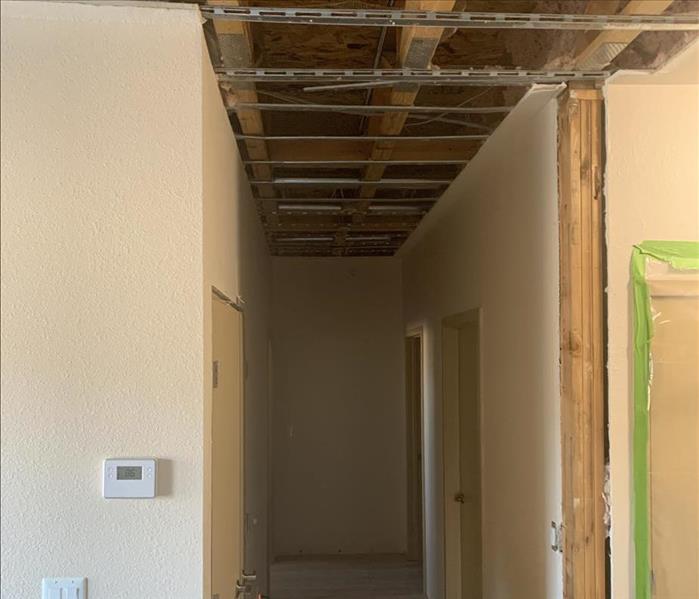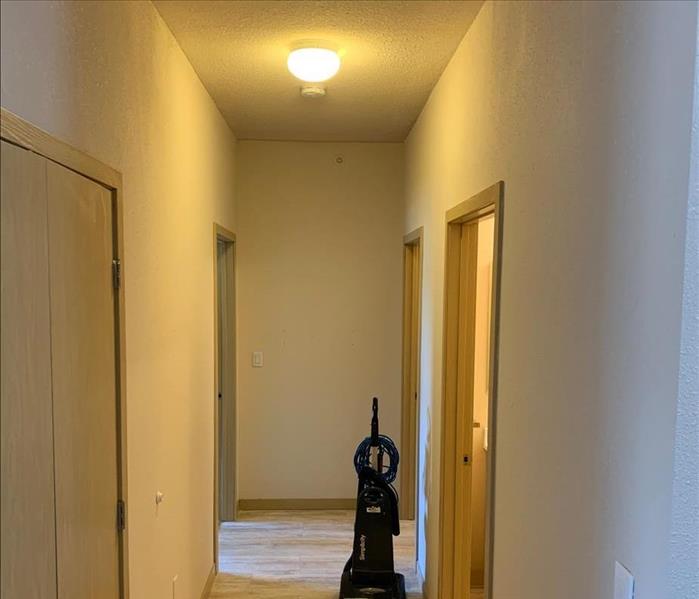
Step 4: Drying and Dehumidification
Our Water Damage Restoration Process
After our team has extracted any standing water from the affected areas, the focus will then move to the drying and dehumidification process. This process involves using air movers to wick moisture up and out of surfaces and send it into the surrounding air. Our commercial grade high-capacity dehumidifiers then remove wet moisture from the air and return warm dry air to the area.
The dehumidification process forces moisture out of various materials within the affected area so that they can properly dry. This is a critical step in the water damage restoration steps because any porous material (from wood to drywall) can hold damaging levels of moisture even if they look completely dry. Our expert-trained technicians will continue to monitor floors and walls to ensure that they are dried out properly using a moisture meter.
In our 19,000 square foot state of the art facility, we pride ourselves in having the most up to date equipment. Our high-speed air movers allow for moisture to be evaporated at a faster pace and our industrial grade dehumidifiers efficiently pull water vapor from the air. We have over 400 air movers which means we can handle some pretty big jobs.
Drying / Dehumidification
Our Professionals will use room measurements, temperature, and relative humidity to determine the optimal number of air movers and dehumidifiers to dry your home or business. We’ll carefully monitor the progress using moisture meters until the materials return to acceptable drying goals.
- Use Dehumidification Equipment
- Use Monitoring Equipment to Track Progress
Monitor Floor and Walls
We check the moisture levels to monitor the drying process.
- Monitor Floors
- Monitor Walls
Drying Equipment
- Industrial-grade dehumidifiers help prevent secondary water damage like swelling and warping of floors, walls, and furniture.
- High-speed air movers create airflow across walls, carpets, pads, and furniture, which accelerates the evaporation of moisture.



 24/7 Emergency Service
24/7 Emergency Service




